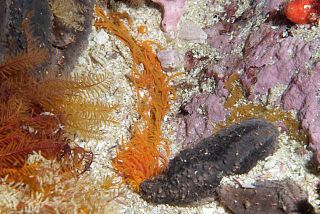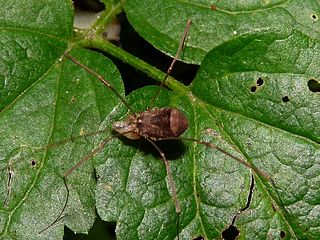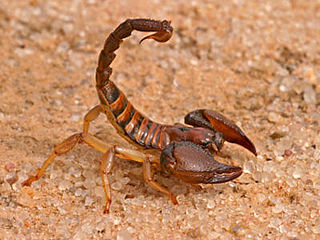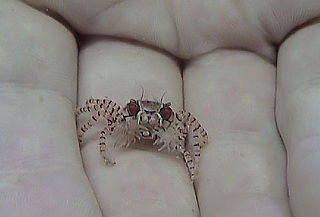 W
WAlicia mirabilis, commonly known as the berried anemone, is a species of sea anemone in the family Aliciidae. It changes shape as night falls expanding its column and tentacles to catch its food. It can be found in the Azores, Portugal, Spain and the Mediterranean and Red Seas.
 W
WCirriformia capensis, commonly known as the orange thread-gilled worm, is a species of marine polychaete worm in the family Cirratulidae.
 W
WDugesia sagitta is a species of dugesiid triclad that inhabits the rivers of Corfu, Greece. The specimens of this species are up to 10 millimetres (0.39 in) long and 3 millimetres (0.12 in) wide.
 W
WHadogenes troglodytes is a species of scorpion from southern Africa. It is commonly known as the flat rock scorpion and commonly sold on the exotic pet market. It was once regarded as having the longest recorded body length of any scorpion, reaching up to 20 cm, however Heterometrus swammerdami currently holds the record for being the world's largest scorpion at 9 inches (23 cm) in length.
 W
WLeiobunum blackwalli is a species of harvestman. It is found in Europe.
 W
WThe robust burrowing scorpion is a widespread species of scorpion in the drier regions of southern Africa. It is a burrowing scorpion, which often places its burrow beside a large rock. Compared to others of its genus, it has a particularly sturdy body with large pinchers.
 W
WOpistophalmus glabrifrons is a large species of burrowing scorpion found in Southern and Eastern Africa.
 W
WOrange Flattail Scorpion is a species of highly venomous scorpion found in southern Africa. The scorpion is reddish brown to orange and grows up to 80mm in length.
 W
WScolopendra polymorpha, the common desert centipede, tiger centipede, banded desert centipede, or Sonoran Desert centipede, is indigenous to the Southwestern United States and northern Mexico, north to the Pacific coast. It inhabits dry grasslands, forest, and desert; in these habitats, the centipedes generally take up residence under rocks, though they have been observed creating burrows in suitable environments and inside rotting logs.
 W
WTriactis is a genus of sea anemone in the family Aliciidae. It is monotypic, having only one species – Triactis producta. This is found in shallow waters in the Indo-Pacific where it lives on the seabed, rocks and corals. It derives much of its energy needs from the symbiotic algae it contains. It also forms a mutualistic relationship with small Lybia crabs.